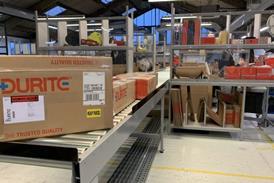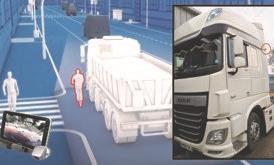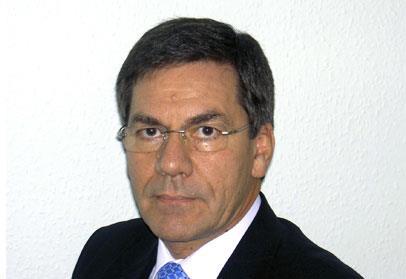
One of the best known figures in the UK transport industry, Daf Trucks marketing director Tony Pain retired on 4 October at the age of 63,45 years to the day since he started work at Leyland.
Pain got into the job because he always wanted to design trucks, but says he has stayed because of the people.
“Anybody can be close to the people in their own company but it goes beyond that to the dealers and ultimately the customers,” he says. “ I can’t think of many industries where we would regard customers as friends. There is a level of mutual trust and if we are not prepared to be open and discuss things you won’t get very far. It isn’t that big an industry and by and large they are a nice bunch of people.”
Having spent so long in the industry Pain has a better understanding than most what makes operators buy a particular brand of truck, and he finds the combination of engineering and psychology involved in selling trucks fascinating.
If you accept that today no one builds a really bad truck, he says the key differentiator has to be after sales service – an area where Dafaid has come to be recognised as the gold standard.
“A lot of it is down to trust and relationships,” he says. “What makes people come back and buy another one is because you delivered on what said you were going to do. It is all about the dealer network and the service side – everyone accepts that trucks break down and it is what you do when it happens that matters.
“That became the differentiator in how the company treated the customer – there were some duff trucks and those companies that didn’t react are probably the ones who are no longer in business,” he says. “I do believe a lot in responsiveness of a manufacturer when things go wrong and their understanding of the operator. He has his own problems and the last thing he needs is some issue with the truck – it is a tough old business.”
Lemon
Over his career however Pain has seen the occasional lemon come to market.
“I drove off the production line the very first 500 fixed head engine which went on to gain Leyland an extremely poor reputation,” he says. “About the same era, the Leyland Buffalo was not the most reliable truck in the world while at the other end of the scale the little Leyland Terrier had some strange braking system on it that seemed like a good idea at the time.
“I learnt to avoid two words in product marketing - ‘new’ and ‘technology’. ‘Proven’ is a much better word in the world of trucks as the audience is quite conservative and what matters above all is reliability.”
On the other hand, Daf hasn’t been consistently UK market leader without building some very good trucks.
“Probably the one I most proud to be part of was the launch of the 95 XF in 1997,” Pain says. “We had come from the 95 Series which was fundamentally a good truck but had had a slightly patchy few years. We turned it into something that was excellent on fuel, loved by drivers and changed a lot of people’s views of Daf’s heavy trucks. It proved to me again that evolution rather than revolution could achieve an awful by understanding the driver. If the driver likes the truck he will get good fuel economy and he will look after it.”
As the interface between Daf Trucks and UK operators, Pain has been able to influence the design of trucks for the UK market.
“I am a strong believer that the UK market is not the same as many of the European markets,” he says. “One of the differences is that fuel has always been more expensive in the UK and that has driven efficiency with the use of tall trailers for example. And on the Continent a two-axle rigid probably means a 19-tonner pulling a drawbar with a 350hp engine, so it will be quite heavy. What the UK wants is maximum payload, so they want it lightweight with 250hp or 300hp, because it is only used on local deliveries.”
Emissions
Over his 45 year career, Pain has seen the implementation of ever increasingly stringent emissions standards, starting with Euro-1 in 1992. While many regard Euro-3 introduced in 2001 as a watershed, Pain says the latest Euro-6 standard is actually the biggest leap.
“It is probably bigger than Euro-3, 4 and 5 put together,” he says. “It is incredibly clean – cleaner than a gas engine - and there are quite a few cities in the world where driving a Euro-6 truck will actually clean up the air. To do this and still maintain good fuel economy requires an incredible amount of technology that is unseen - and should be unseen by the operator – but is quite a dramatic change.”
While the truck manufacturers have made a host of mods to ensure Euro-6 will be better than the previous generation of Euro-5s on fuel, Pain says that the focus should have been on carbon rather than NOx and particulate emissions.
“The whole world has changed to be worried about carbon emissions - and that means fuel economy,” he says. “We and most other manufacturers have done a lot at Euro-6 because we concerned about fuel economy, which has put the cost and complexity up. Clever transmissions, alternators and compressors have all reduced parasitic losses and our Euro-6 will be 5% or 6% better on fuel than Euro-5. But the next level of development will be all about CO2 – still something like 50% of the energy from the fuel goes out of the exhaust pipe.”
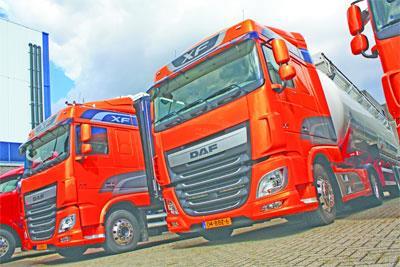
Some of the improvements in fuel economy have been achieved by taking a measure of control away from the driver, to prevent the worst abuses that can really waste fuel. But Pain believes that the very best driver will always outperform automated systems.
“Software can understand the road terrain but it will never understand the road conditions,” he says. “So we still believe the driver should be able to over ride what the truck is doing. I am a great believer in automated transmissions and cruise control – they can help the worst drivers in the fleet but you will never beat the best drivers.”
Surge
The expected surge in Euro-5 sales has been slow to manifest itself in the UK, with the September SMMT data indicating 2013 truck sales will be similar to 2012 at around 35,000 units. But Pain is pessimistic about 2014.
“I think sales this year could be as high as 44,000, but as many 8,000 of those could have been purchased earlier this year to avoid Euro-6 and will be registered next year,” he says. “So my forecast for next year is 36,000 to 37,000 registrations but 8,000 of those would have been sold this year. So the short term market may virtually halve because Euro-6 will be very expensive.”
This is also partly driven by operators finding in the post-2008 recession that they can run modern trucks on for longer without suffering reliability problems. “They found that it works and the average contract length went out from four years to five and a half. It may come back to five years but a lot of people ran trucks on for seven years and found they were fine even at very high mileages.
"There are 11% fewer trucks on the road today than in 2007 but the amount of goods they are carrying and the miles they do are much the same. So those trucks are used a lot harder and people have found they don’t have to replace them. What that also means is that when they are looking at the cost of Euro-6 they can depreciate them sensibly over a longer period.”
Life and times of Tony Pain
Like many in the haulage industry, Tony Pain originally had a strong connection with farming.
Brought up on the family farm, he was more interested in things with four wheels than four legs. “At that time in the 1960s there were really only two companies that did both tractors and trucks – one was Ford and the other was Leyland,” he says. “Leyland was in its heyday and the year I joined – 1968 – was the year it had merged with what was BMC, so it was this huge empire exporting all over the world.”
Pain started off on a conventional apprenticeship but quickly got onto a university mechanical engineering degree course. “I got my degree and haven’t done a day’s engineering since,” he says.
“So in that sense I am a failed engineer. But I did engineering because ever since I was a kid I wanted to design trucks. When I came back from university and joined the Leyland drawing office they told me to start on a fuel tank bracket. What I hadn’t realised is that for the people who in my terms designed trucks it was all about concepts not the detailed bits. So after a spell in tractors I moved into product marketing and worked for about 20 years in Leyland.”
In 1987, Daf took over Leyland Trucks, and Pain had the difficult job of merging the two product ranges in the UK. “That was an interesting couple of years,” he says. “When that was done I went off to do the export side. That was fascinating and I got to all sorts of places you would never go on holiday – Korea, Zimbabwe, Ivory Coast, the United States and Canada.”
In 1992 Pain returned to HQ in Thame to become marketing director of what by then was Daf Trucks, which at the time was vying for market leadership with Iveco Ford, just in time for the recession triggered by war in the Arabian Gulf and the consequent rise in oil prices.
“I would never want it to happen again but I wouldn’t have missed it for the world,” he says. “You really find out about people and their loyalties. To emerge from that and be market leader for the past 17 years has been a great experience.”
Asking the right questions
Pain’s four years in export sales taught him a valuable lesson when it comes to finding out what operators want from a truck – ask the right question if you want the right answer. When in Korea he was talking to a truck builder about a joint venture to sell Leyland axles. Europe had moved to spigot mounted wheels, where the studs just clamp the wheel to the hub. In Korea they were still using cone mountings, where the cones on the studs take the weight.
Pain takes up the story: “We asked them ‘don’t you have problems with the wheel studs in these cone mountings?’ to which they replied ‘no problems’. The day after we went to see an operator and they had a huge heap of wheel studs at least half a metre high and a guy changing studs.”
“We said ‘I thought you didn’t have problems with the studs’ and they replied ‘we change two or three studs every night, the truck is back on the road in the morning - no problems’. What we should have asked was ‘do wheel studs break?’ – if you ask the wrong question you will get the wrong answer. That is the fascinating thing about market research – it is about understanding people and why they do what they do.”
Making public transport sexy
One of Pain’s more surprising views is that more needs to be done to get people out of their cars and on to public transport, leaving the roads free for essential freight traffic.
“There are around a fifth fewer trucks on the road now than in 1950 but there are 13 times as many cars,” he says. “Trucks don’t cause congestion, they suffer from it. My own fleet is one car and this morning I left home 20% laden, drove to Millbrook, parked it up most of the day, and tonight I will drive back 20% laden. No truck operator would consider doing that.
“If we really want to solve the problem of CO2 we really should be aiming at cars. There should be more incentives to get people of out of their cars and to make public transport more sexy and useable. Don’t target trucks because they are incredibly efficient.”
In a relatively small country with an ageing rail infrastructure, putting more freight on the rails in the UK is also a bad idea, Pain argues, especially if it holds up passenger trains.
“Freight trains are rather slow which is why they mostly run at night here and in Ireland they don’t run at all,” he says. “If one freight train holds up a passenger train, and that stops me using the train, get freight off the rails and on the roads. It is not a vote winner to say ‘get cars off the roads and free them up for trucks’ but in the end putting people on trains and buses is the most sensible thing. You can run trains on electricity which can be from sustainable sources like nuclear or wind – it is very difficult to do that with trucks.”
Getting the message across to the pubic that heavy trucks are in fact very efficient and environmentally friendly is a challenge, Pain concedes.
“One truck goes to a supermarket and delivers its goods – 300 cars go in and take the same goods out,” he says. “We should deliver to people’s homes in a 44 tonner – but no one wants a big truck in their little village. But it would be far better to have one large truck go in than five vans. But will the public understand that a fully laden truck at 56mph on the motorway is a good thing not a bad thing?”
Retirement plans
One thing Pain won’t be doing now he has quit the day job is taking up golf. He is considering his four wheel options – apart from a sensible BMW 330 his garage also contains an immaculate 2005 Porsche 911 Carrera 2S which he will either start to use more or trade in for something a bit more interesting.
“If I am ever going to use the Porsche maybe it will be when I retire,” he says. “If I don’t, it I can always trade it in for something I will use, maybe an older classic like a 1988 air-cooled 993 or a Ford Anglia – my very first car – which actually would be just as much fun.”
Always a keen cyclist, Pain is planning to up his weekly mileage and may consider taking on one of Transaid’s gruelling overseas adventures.
“I probably only do 25 miles once a fortnight now and I would like to do say 10 miles three times a week,” he says. “I wouldn’t mind doing one or two longer rides and with more practice I would like to take on London to Paris or something.”
Despite his four years travelling the globe as export director there are still some places he wants to visit. These include a trip to Texas straight after his two or three retirement parties are over and a look around New Zealand for the month of February.
He also plans to stay involved in the industry he loves, as a consultant rather than in a full time role. “If anyone would pay me to beat up the government and tell them how efficient trucks are I would love to do that,” he says. “I also wouldn’t mind getting more involved in my local village community or some charity work. After being in business with so many people for so long, just to drop into nothing isn’t for me.”

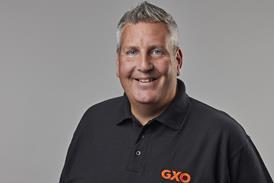
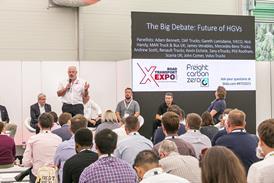
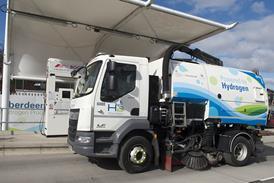


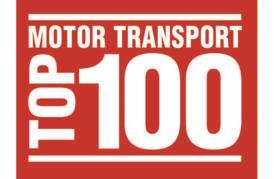
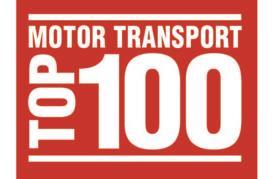
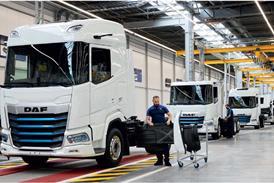
![Mercedes-Benz_eActros_600_(1)[1]](jpg/17820_mercedesbenz_eactros_600_11_978080.jpg)

